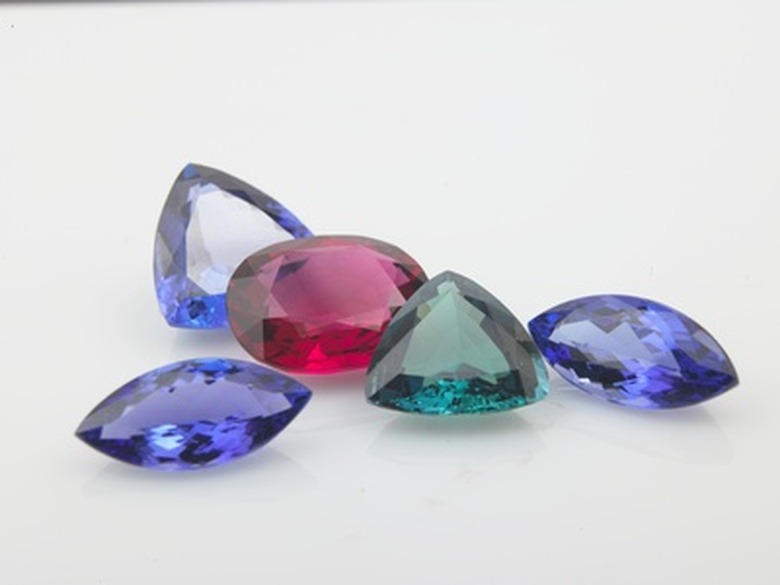How To Identify Semiprecious Stones
Semiprecious stones include amethyst, turquoise and jade. They are not considered precious stones, since they are in relative abundance and for historical reasons they have not traditionally been considered as valuable as diamonds, rubies or sapphires. If a stone could only be found in a certain location or had a certain religious significance then it would be considered precious. Stones that do not fit into this description were considered semiprecious. To identify semiprecious stones one needs to know the qualities of specific types of stones.
Step 1
Consider that semiprecious stones generally include stones that are not diamonds, sapphires, rubies or emeralds. According to jewelry retailer LusterForever, amethyst once was considered precious, but since ample reserves were found in Brazil and Uruguay, it has since lost this distinction.
Step 2
Look at an amethyst, which is a purple type of quartz. If the gem is not purple it is not amethyst. The stone may be various shades of purple, however. For instance, in Germany a light shade of amethyst is mined; while in Russia, in the Ural Mountains of Siberia, a dark purple amethyst is mined. This stone can be further identified by its cut which can be described as either the high-quality Siberian, the moderate quality Uruguayan or the low-quality Bahain. These terms do not indicate where the stones are from, only their grade.
Step 3
Look at another semiprecious stone like jade. Jade is actually a term for two separate stones one being nephrite, which tends to be green and white in color. The other stones, jadeite has the characteristic green color often seen in jade. Elements like chromium can alter the color of the stone, giving it, in this instance, a highly valued green color. Strength of the stone is another distinguishing quality. It has a hardness of 6.5 to 7. Jade is stronger than steel and originally came from Asia and Central America.
Step 4
Check the properties of obsidian, another semiprecious stone. It has a uniformly black color and is created when volcano lava touches water, cooling it quickly. It has a hardness of 5 to 5.5 and can also have a golden patina, called sheen obsidian. It can have flecks of white material in it, which is called snowflake obsidian. The gem can also have a rainbow sheen and be called rainbow obsidian. Unlike amethyst, it lacks crystal faces.
Step 5
Note the qualities of Turquoise, a semiprecious stone. It is typically blue-green in appearance and may have webs of gold coloring embedded into it. It is often used to make jewelry. Deposits of the material are found in in Iran, Africa, the American Southwest and China. To distinguish it from fake turquoise you must look at the coloring. When the color is too intense, it may be a fake. Placing a hot needle on the jewelry will indicate if it is plastic or not, as mentioned by author and director of the Center for Indigenous Arts & Cultures.
Cite This Article
MLA
Taylor, Somer. "How To Identify Semiprecious Stones" sciencing.com, https://www.sciencing.com/identify-semiprecious-stones-5022611/. 24 April 2017.
APA
Taylor, Somer. (2017, April 24). How To Identify Semiprecious Stones. sciencing.com. Retrieved from https://www.sciencing.com/identify-semiprecious-stones-5022611/
Chicago
Taylor, Somer. How To Identify Semiprecious Stones last modified March 24, 2022. https://www.sciencing.com/identify-semiprecious-stones-5022611/
